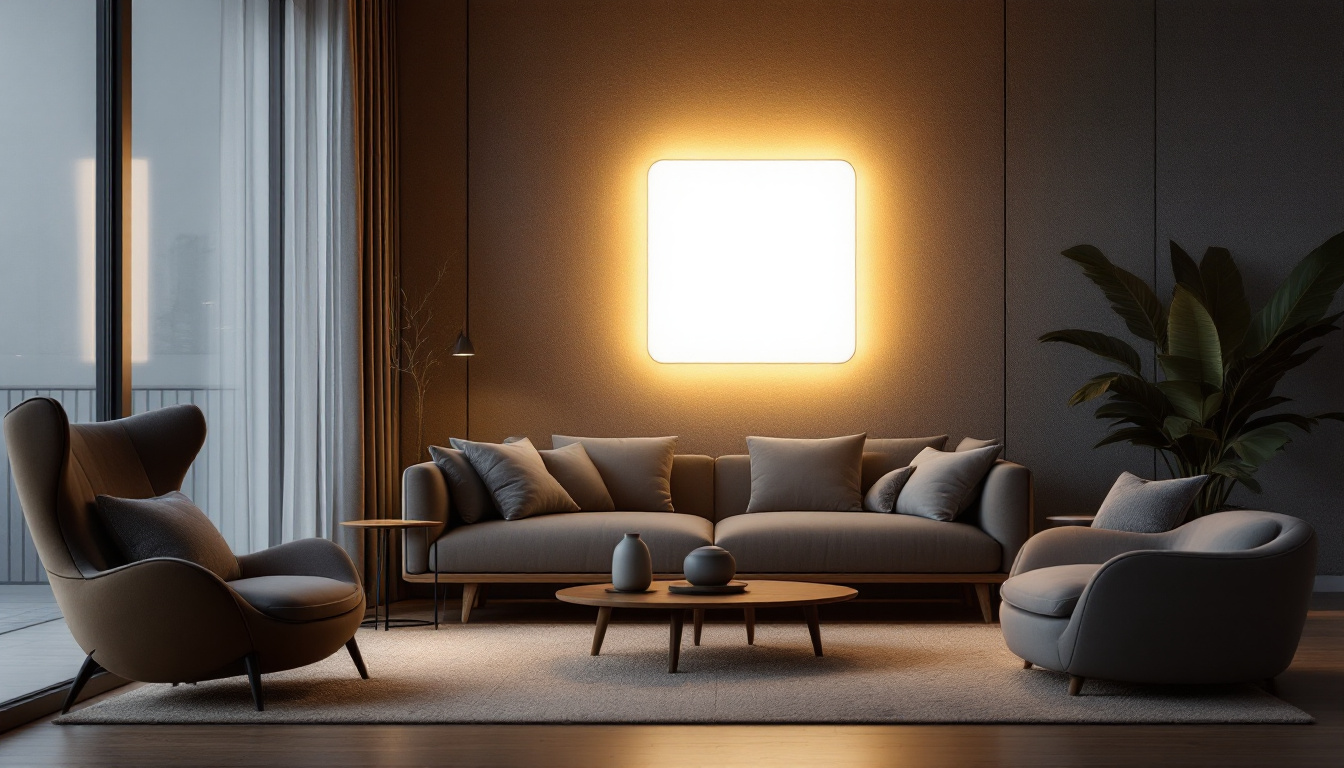
island lighting is a unique and essential aspect of modern lighting design, particularly for contractors who specialize in both residential and commercial projects. This type of lighting not only enhances the aesthetic appeal of a space but also serves practical purposes. Understanding the science behind island lights can significantly improve a contractor’s ability to deliver effective lighting solutions that meet client expectations.
In this article, we will explore the various components of island lighting, the principles of light behavior, and the latest technologies that can be utilized to create stunning and functional lighting designs. By gaining a deeper understanding of these elements, lighting contractors can elevate their projects and provide exceptional value to their clients.
Island lighting typically refers to fixtures that are suspended above kitchen islands, dining areas, or bar counters, creating focal points that draw the eye and enhance the overall design of the space. The choice of fixtures can range from pendant lights to chandeliers, each offering a different ambiance and style. For instance, sleek, modern pendant lights can provide a contemporary feel, while rustic chandeliers can evoke a sense of warmth and charm. The height at which these lights are hung is also crucial; too low can obstruct views and create a cramped atmosphere, while too high may not provide adequate illumination for tasks.
Moreover, the color temperature of the bulbs used in island lighting plays a significant role in setting the mood of the environment. Warmer tones can create a cozy and inviting atmosphere, ideal for family gatherings or intimate dinners, while cooler tones can enhance focus and productivity, making them perfect for workspaces. Additionally, the integration of smart lighting technology has revolutionized how contractors approach island lighting. With the ability to control brightness and color through mobile apps or voice commands, clients can now customize their lighting experience to suit their needs and preferences at any given moment.
Before delving into the specifics of island lighting, it is crucial to understand the fundamentals of light itself. Light is a form of electromagnetic radiation that is visible to the human eye. It plays a pivotal role in how we perceive our environment, influencing mood, functionality, and aesthetics.
Light possesses several key properties that are essential for lighting contractors to understand. These include intensity, color temperature, and directionality. Intensity refers to the brightness of the light source, which can affect the overall ambiance of a space. Color temperature, measured in Kelvin, describes the warmth or coolness of the light, influencing how colors are perceived in a room. Directionality relates to the angle at which light is emitted, impacting shadows and highlights.
Light behaves in various ways when it interacts with different surfaces. Reflection, refraction, and absorption are three primary behaviors that can alter the effectiveness of lighting. Reflection occurs when light bounces off surfaces, while refraction involves the bending of light as it passes through different mediums. Absorption happens when surfaces take in light, affecting the overall brightness and color of a space. Understanding these behaviors is essential for creating effective lighting designs.
When designing island lights, it is important to consider both functionality and aesthetics. The goal is to create a lighting solution that enhances the space while meeting the practical needs of the occupants. This section will explore key considerations for designing effective island lighting.
The selection of light fixtures is one of the most critical aspects of island lighting design. Fixtures should complement the overall style of the space while providing adequate illumination. Pendant lights, for example, are a popular choice for kitchen islands, offering both functionality and visual appeal. When selecting fixtures, contractors should consider factors such as size, shape, and material to ensure a cohesive look.
Effective island lighting often involves layering different types of light to create depth and dimension. Ambient lighting provides general illumination, while task lighting focuses on specific areas, such as workspaces. Accent lighting can be used to highlight architectural features or decorative elements. By combining these layers, contractors can achieve a balanced and inviting atmosphere.
Light distribution is a crucial factor in the effectiveness of island lighting. It refers to how light is spread across a space, influencing visibility and comfort. Poor light distribution can lead to dark spots or overly bright areas, detracting from the overall experience.
There are several types of light distribution patterns, including direct, indirect, and diffuse lighting. Direct lighting illuminates a specific area, making it ideal for task-oriented spaces. Indirect lighting, on the other hand, reflects light off surfaces, creating a softer and more ambient glow. Diffuse lighting spreads light evenly throughout a space, reducing harsh shadows and creating a more welcoming environment.
To achieve optimal light distribution, contractors must calculate the appropriate light levels for the space. This involves considering the size of the area, the height of the ceiling, and the intended use of the space. Utilizing lighting design software can streamline this process, allowing contractors to visualize different scenarios and make informed decisions.
As sustainability becomes increasingly important in the construction and design industries, lighting contractors must prioritize energy efficiency in their island lighting designs. This not only benefits the environment but can also result in significant cost savings for clients.
LED (Light Emitting Diode) technology has revolutionized the lighting industry, offering a highly energy-efficient alternative to traditional incandescent and fluorescent bulbs. LEDs consume significantly less energy and have a longer lifespan, reducing the frequency of replacements. Additionally, they are available in a wide range of color temperatures and styles, making them versatile for various design applications.
Integrating smart lighting solutions into island lighting designs can further enhance energy efficiency. Smart lighting systems allow for remote control and automation, enabling users to adjust brightness levels and color temperatures based on their preferences and needs. These systems can also be programmed to turn off lights when not in use, minimizing energy waste.
The color of light can significantly influence the mood and atmosphere of a space. Understanding the psychological effects of different color temperatures can help contractors create environments that align with their clients’ desires.
Warm light, typically ranging from 2700K to 3000K, creates a cozy and inviting atmosphere, making it ideal for spaces where relaxation is a priority, such as dining areas. Cool light, on the other hand, ranges from 4000K to 5000K and is often associated with productivity and focus, making it suitable for workspaces. By carefully selecting the color temperature of island lighting, contractors can enhance the overall experience of a space.
The Color Rendering Index (CRI) measures a light source’s ability to accurately reproduce colors compared to natural light. A higher CRI indicates better color accuracy, which is particularly important in spaces where color perception is crucial, such as kitchens and galleries. Contractors should consider the CRI of their chosen fixtures to ensure that colors appear vibrant and true to life.
Proper installation is vital for the success of any lighting project, including island lights. This section will outline key installation considerations that contractors should keep in mind to ensure optimal performance and safety.
Before installation, contractors must assess the electrical requirements of the chosen fixtures. This includes determining the appropriate voltage, wattage, and circuit capacity. It is essential to follow local electrical codes and regulations to ensure safety and compliance. Additionally, contractors should consider the placement of outlets and switches to facilitate easy access and control.
The height and placement of island lights are crucial for achieving the desired effect. Pendant lights, for instance, should be hung at a height that provides adequate illumination without obstructing views or creating glare. A general guideline is to hang pendant lights 30 to 36 inches above the countertop. Proper placement can enhance both functionality and aesthetics, ensuring that the lighting complements the overall design.
Once island lights are installed, ongoing maintenance is essential to ensure their longevity and performance. Contractors should provide clients with guidance on proper care and upkeep to maximize the lifespan of their lighting fixtures.
Regular cleaning of light fixtures is necessary to maintain their appearance and functionality. Dust and grime can accumulate over time, diminishing the quality of light output. Contractors should recommend appropriate cleaning methods based on the materials of the fixtures, such as using a soft cloth for glass or metal surfaces. Additionally, clients should be aware of the importance of replacing burnt-out bulbs promptly to maintain consistent lighting levels.
As technology advances, upgrading or retrofitting existing island lights may be beneficial. Contractors should stay informed about the latest lighting innovations and be prepared to recommend upgrades that enhance energy efficiency, aesthetics, or functionality. This proactive approach can help clients stay current with trends and improve their overall lighting experience.
Island lighting is a multifaceted aspect of design that requires a thorough understanding of the science behind light. For lighting contractors, mastering the principles of light behavior, distribution, and technology is essential for creating effective and aesthetically pleasing lighting solutions. By considering factors such as energy efficiency, color temperature, and installation practices, contractors can elevate their projects and provide exceptional value to their clients.
As the demand for innovative lighting solutions continues to grow, staying informed about the latest trends and technologies will be crucial for lighting contractors. Embracing these advancements will not only enhance the quality of their work but also contribute to a more sustainable and visually appealing environment for all.
Ready to take your island lighting projects to the next level? At LumenWholesale, we provide lighting contractors with the high-quality, specification-grade lighting products you need to shine. Our extensive selection is tailored to meet the highest industry standards, ensuring every installation stands out in both performance and design. Say goodbye to local distributor markups and hello to unbeatable wholesale prices, free shipping, and the convenience of bulk buying. Elevate your lighting solutions today and give your clients the exceptional value they deserve. Discover the perfect blend of quality, affordability, and convenience at LumenWholesale – Wholesale Lighting at the Best Value.
Illuminate your outdoor spaces sustainably with solar-powered yard lights.

Discover the essential insights lighting contractors need to know about the Maxim 7.5 LED Flush Mount.

Discover the revolutionary world of Waffer Lights, the cutting-edge solution for energy-efficient lighting.

Discover effective strategies for lighting contractors to tackle common challenges when installing retrofit LED can lights.